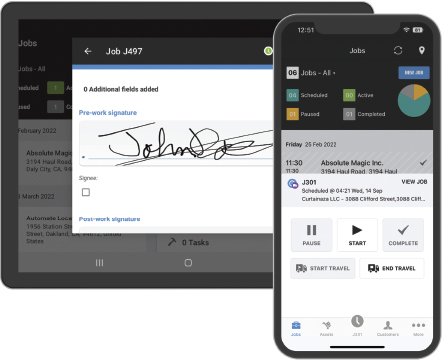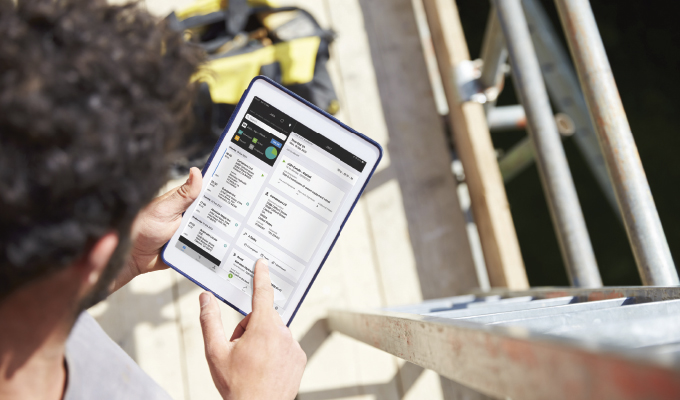The US Department of Energy (DOE) has stated that right-sizing a fleet is a management practice that will help vehicle fleet managers build and maintain sustainable and fuel-efficient fleets.
It’s important to recognize that right-sizing is not the same as downsizing. Rather, it is a way to assist all levels of management in creating the most efficient fleets. It’s not just about reducing costs but creating a cost-effective fleet for the long term. Doing so now can implement means of significant cost-cutting and ensure reduction of fuel costs and maintenance, lower emissions, and optimized usage.
For agencies to do this, they must implement a telematics platform that can provide the most critical information on route inefficiencies, underused vehicles, and over or underpowered units that don’t match the needs of a fleet.
UNDERSTAND THE FLEET
The first step in right-sizing a fleet is understanding how the vehicles are used. Part of that means dissecting a few things about the fleet, like whether it has the appropriate number of vehicles, the right type, where they are at any given time, how often they’re used, and the general health of the fleet.
But how does one definitively know? Using and understanding data through telematics is the most effective way to recognize these key parts of a fleet.
A telematics platform provides all this data by using its ability to identify route inefficiencies, under-used vehicles, and units that don’t align with the needs of a particular fleet. The insights can help managers determine if they have the appropriate number and type of vehicles in their fleet and if they are using them in the best ways possible. It can also help provide complete transparency to know if some assets are sitting idle while others are overused.
Telematics gives fleet managers the support they need to accurately identify vehicle downtime and availability while pinpointing the use of each vehicle. Landmark history reports and fleet use data provide necessary information to identify underused vehicles and understand why they have been unused for extended periods—resulting in a better understanding of which assets are needed within the fleet.
Managers should run this review regularly and have frequent conversations with drivers about the vehicles they operate. They should also comb through other specific telematics data and fleet analytics.
RIGHT-SIZING WORK
Using the tools needed to figure out how to right-size a fleet is one thing, but once managers execute right-sizing and see the benefits they reap from it, the payoff comes. The results were staggering in studies that determined precisely how right-sizing a fleet has benefitted companies. After implementing telematics to right-size their fleet, one company saw a 1,500% ROI and saved more than $1 million in fuel costs. The technology was able to determine vehicles and equipment that were left idling unnecessarily for hours on end, which meant they were subsequently creating large amounts of greenhouse gases. All that wear on the engines led to warranty issues.
On another note, the company was also experiencing issues with equipment usage. By right-sizing their fleet with the help of telematics technology, they could track the equipment use in a way that helped them improve efficiency and vehicle availability and address other issues that allowed them to operate at peak efficiency.

RIGHT-SIZING PAYOFFS
In large agencies with expansive fleets, there is naturally more room for error in oversight, so right-sizing is even more crucial to these agencies. Doing this through the implementation of telematics will prove to benefit the below essential aspects of fleets.
Budget savings: There’s no surprise that purchasing vehicles is the highest cost for most fleets. When telematics can assist in getting an agency to be right-sized, they have the data to make the best purchasing decisions as well, and they won’t throw money at an underused or unnecessary vehicle.
Emissions reduction: Right-sizing can help managers decide the best new vehicles to purchase—perhaps something more fuel efficient or even an electric vehicle, which won’t just save them money but will be better for the environment.
Fuel and maintenance: When a fleet is right-sized, an agency will only spend on fuel and maintenance if necessary.
Optimize usage: When managers understand how many vehicles they genuinely need, they can use their fleet more effectively and ensure they get a better ROI per vehicle.

ONGOING ASSESSMENT
Monitoring critical parts of a fleet—its usage, maintenance, and asset location—is crucial to guaranteeing an agency has the appropriate number and types of vehicles in the right place. It is essential to continue operational efficiency, so right-sizing should be a constantly active process. Ultimately, there is better customer service and an enhanced revenue stream when there is the appropriate mix of assets for maximum productivity through right-sizing. It will minimize downtime, ensure the proper assets are available at the right time and in the location needed, lower the cost of fuel and maintenance, reduce emissions, and optimize usage.
Implementing technology that can assist in right-sizing a fleet will provide tools to flourish and adjust as needed.
ABOUT THE AUTHOR
Clinton Strother is the director of government sales at GPS Insight. Find out more, visit www.gpsinsight.com.




